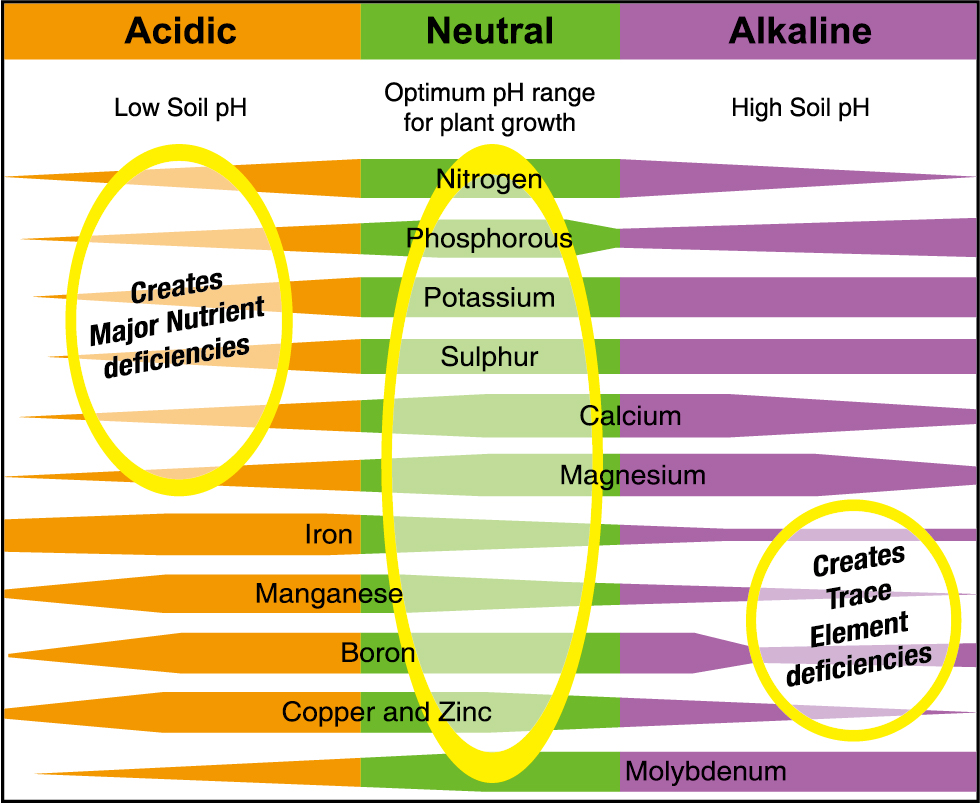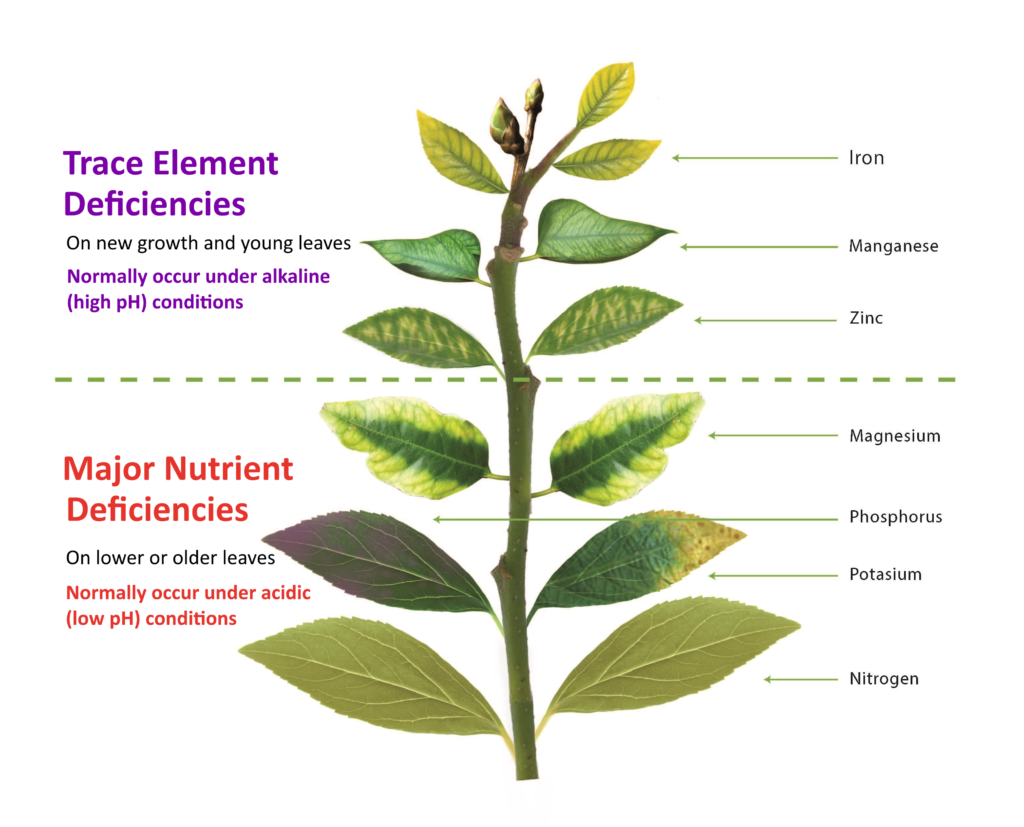Soil pH has direct influence on root activity and absorption of nutrients by plants.

- Most nutrients are easily available to uptake at a neutral pH range of 6 -7.
- Under alkaline conditions, trace elements such as Iron, Zinc & Manganese are trapped in the soil and cannot be taken up by the plant even though plenty supplied and available in soils; hence in alkaline soils we commonly see as yellowing (deficiency) of top/fresh growth due to lack of availability of trace elements which is common in most vegetables and Fruit/Flower and Citrus trees.
- On the other hand, under high acidic conditions, major nutrients like Nitrogen, Phosphorus, Potassium, Magnesium and Calcium become less available resulting in deficiency symptoms. Regular maintenance and application of corrective nutrient elements is necessary to overcome deficiencies under these conditions.
- Different plant groups have a different pH preferences. Most plants prefer and grow well at a pH range of 6-7 (i.e. slightly acid to neutral). However there are exceptions like acid loving plants such as Azalea, Camellia, Gardenia, Blue Hydrangeas, Blue berries etc. which prefer an acid soil pH of 5 – 6. On the other hand, Pink Hydrangeas and Figs can survive under slightly alkaline pH.
- Unlike other plants Hydrangeas (particularly traditional blue & pink varieties) are highly influenced by pH and change colors dramatically depending on soil pH conditions.
Acidic or alkaline soil conditions can induce nutrient deficiencies

Soil pH & regional soil differences:
- Knowing the pH of soil or growing media is crucial to understand a large number of garden problems.
- Soil conditions vary across Australia, where we have patches of volcanic acidic soils in some regions to coastal lime (alkaline) soils, even within suburban yards, debris of building/construction materials or poor quality soil or fresh compost when added can influence soil pH.
- Environmental factors such as high rainfall (tend to cause acidic soils), temperature or even soil physical structure (being sandy/clay/organic conditions) can also influence pH to change.
- Hence it is important to test and know the pH of your soil so that you can monitor and adjust pH to optimal condition.
